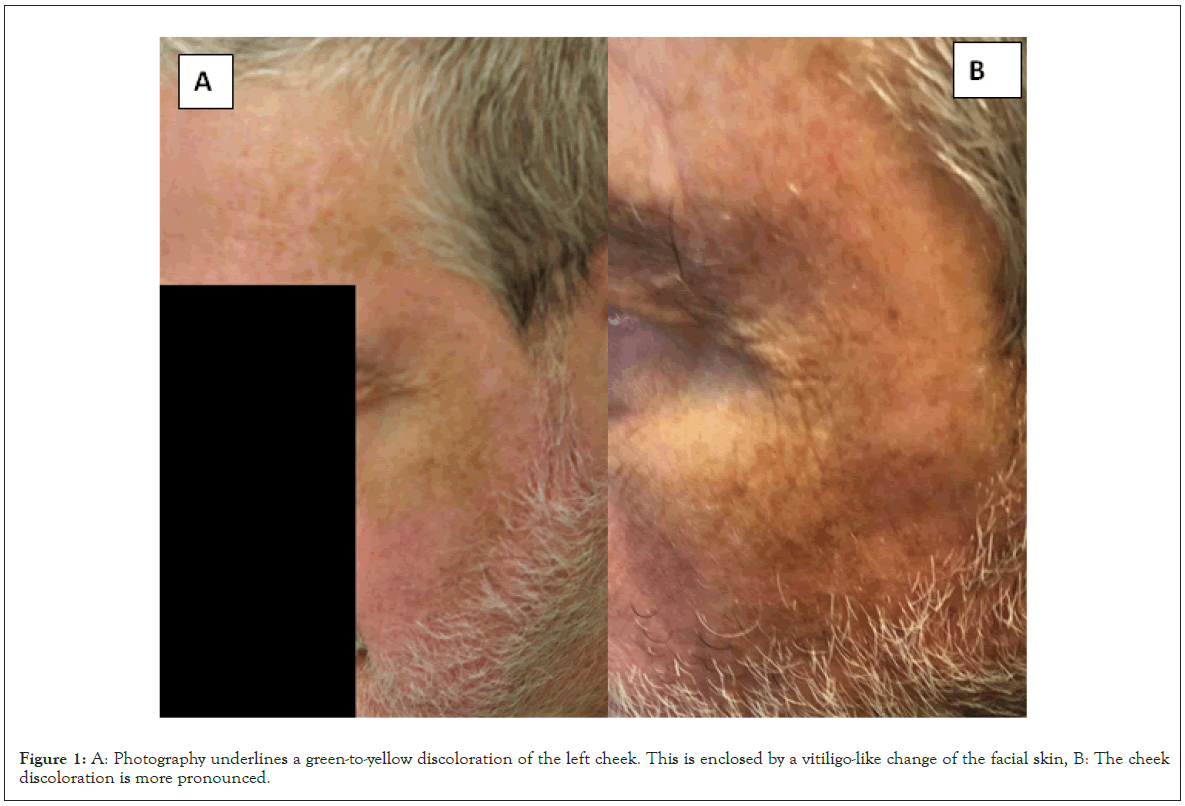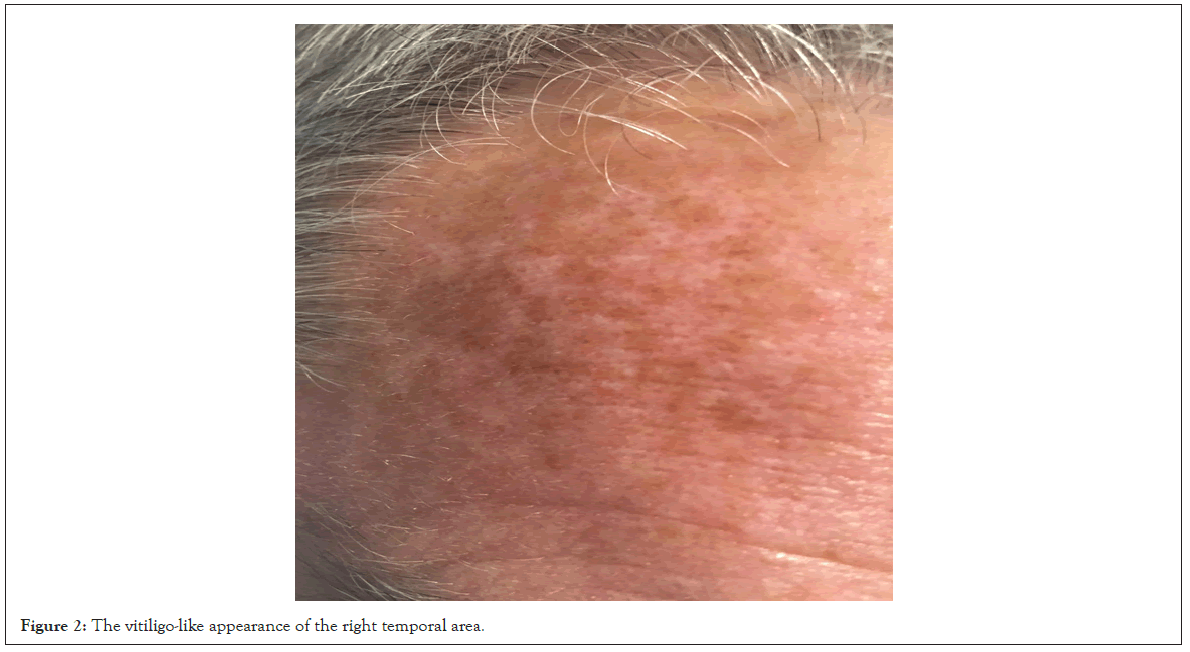
Journal of Clinical and Cellular Immunology
Open Access
ISSN: 2155-9899

ISSN: 2155-9899
Short Communication - (2021)Volume 12, Issue 2
Considered as an inert, extremely resistant, and biocompatible metal, titanium has prevailed for years, as the most valuable material used for the manufacture of dental implants and orthopedic prosthetics. However, titanium is not infallible, as it has been subject to corrosion and to subsequent titanium toxicity, hypersensitivity, and probably also to a form of autoimmunity. Evidence of failure of the contraption, though, is relatively rare. While commenting on its medical advantages and its setbacks, we discuss the rare use of the metal in the spectacles industry and some of its exceptional, related complications.
Titanium; Alloy; Toxicity; Allergy; Spectacle frames; Contact dermatitis
Titanium is recognized as one of the commonest materials employed for dental implants. This success is due to its inertness, its strength, and its biocompatibility. However, a rate of failure is still encountered, consequent to poor oral sanitation, plaque and calculi formation, with secondary peri-implantitis. It seems that, in addition to titanium toxicity, induced by particles discharged from the implant, allergic reactions originating in the metal and in its related alloys, might take place [1].
Titanium corrosion leads to bone loss, secondary to inflammation, rarely highlighting the metal toxicity, as well as a rare occurrence of the “yellow-nail syndrome”. On the other hand, allergy and hypersensitivity might also cause a rare implant disruption.
Titanium mostly presents in the form of titanium dioxide (TiO2) powder, while TiO2 nanoparticles have prevailed in more recent studies. Collections of TiO2 debris from degraded implants are identified mainly in macrophages, but may be carried on to the bone marrow, liver and spleen, with or without systemic adverse effects [1]. The use of titanium in the spectacle frames manufacture has been very occasionally reported.
Titanium alloys are used with orthopedic prostheses and dental implants and are mainly composed of TiO2 with aluminium or/ and vanadium (Ti-6Al-4V). Deleterious effects on dental implants are induced by low pH conditions, as well as by high concentration of fluoride in the buccal cavity [1].
Hypersensitivity to titanium will present with symptoms and signs like erythema, eczema, swelling, urticaria, pain, and necrosis and bone loss in teeth implants. The patch test, used to identify the culprit as titanium is, however, not fully reliable [1].
Regarding orthopaedic prostheses allergic reactions, have been recognized by eczema, inadequate bone repair as well as by failed prostheses. Nevertheless, titanium evokes much less hypersensitivity reactions, when compared to nickel or to palladium.
This is the most striking titanium-associated systemic disease. It features a yellow discoloration of the nails, together with their striking thickening, the nail characteristics being absent occasionally. In addition, bronchial obstruction and lymphedema are frequent, often associated with sinusitis, underlined by a severe cough [2].
The suggested pathogenesis involves titanium ions originating in a galvanic effect between the titanium implants and gold and/or amalgam, but also in corrosion due to fluoride. In the presence of two or more distinct metals, and saliva in the buccal cavity, an electrolytic cell, and electric current are initiated. These release metallic ions from the restoration materials. The ions, in turn, induce corrosion of the implant. In a minority of cases, the titanium comes from medications (diclofenac, celecoxib), or gums, candy or licorice [1].
The rarest the toxic or allergic complications of dental implants or of orthopedic prostheses, the more careful the dentist and the orthopedic surgeon should be, as prevention of a failed implant is superior to its reconstruction. Some secondary effects have been incompletely clarified [3]. Thus, a carcinogenic effect is highly suspected and, although some upper respiratory cancers, notably of the paranasal sinuses, are believed to be associated with titanium, final proof is missing [3,4]. Titanium alloys are believed to be safe to some degree. But, TiO2 microparticles are considered as less toxic than nanoparticles. Moreover, titanium ecotoxicity is being investigated, children and pregnant women being probably at the highest risk.
A patient has been presented with high temperature, extreme fatigue, temporary thrombo-cytopenia, marked lymphadenopathy, hepatosplenomegaly, anemia, neutrophilia, proteinuria with sediments, increased ferritin, positive, but moderate level of ANF [5]. This episode occurred one year after the implantation of a mixed titanium and nickel implant into the jaw, for cosmetic reasons. Despite temporary improvement, she was relieved of her autoimmune-like disorder; the“ASIA” syndrome [6], only when the implant was finally removed [5].
One of the most frequent metallic materials used in the manufacture of glasses frames is nickel alloy [7]. It is of note that in some countries, like the UK, spectacles are considered as medical devices. The European Community has adopted the “Nickel Directives”, which state that, any material that causes irritation, allergy or toxic reactions, should be isolated from direct contact with skin and body parts [7]. On the other hand, titanium has been incorporated in a small part of spectacle frames. However, the appellation “pure (100%) titanium” is rarely considered justified. It usually presents in alloys with nickel or gold [8]. Occasionally, despite the appellation, no titanium is found, at all. In one report [9], titanium-alloys and “memory” alloys, in spectacle frames, contained 40% or more of nickel.
At 55 of age, this myopic individual acquired a pair of spectacles, and for almost ten years, he went on wearing them, occasionally replacing the lenses. At 65, he was given a new frame, but he did not adopt it until he noticed some changes in his facial features. These were discrete and included mild edema around the cheeks, together with a yellowish-brown discoloration (Figures 1a and 1b). The cheeks were enclosed by an area of vitiligo depigmentation. Both temples showed also an irregular, geographic whitish discoloration (Figure 2). A dermatologist diagnosed vitiligo. He prescribed a corticosteroid cream.Any association between the dermatological changes and the frame material description was thought irrelevant. Presently, 7 years after discarding the titanium frames, no improvement has occurred. Kim et al. [10] have described two patients with glasses, who developed nickel dermatitis showing a vitiligo-like depigmentation at the temples. It has been suggested that, in one case, the spectacle frame was made of a nickel alloy. It is conceivable that the 100% titanium frame be responsible for the features of vitiligo in this patient. A mixed association is also noted between titanium and an autoimmune reaction on the one hand, and between vitiligo and an autoimmune propensity.

Figure 1: A: Photography underlines a green-to-yellow discoloration of the left cheek. This is enclosed by a vitiligo-like change of the facial skin, B: The cheek discoloration is more pronounced.

Figure 2: The vitiligo-like appearance of the right temporal area.
Titanium, a highly inert material, has retained for many years a predominant status as an ideal metal for dental implants and orthopedic prostheses. However, titanium toxicity and allergy have been reported, though to a lesser degree than with other metals, like nickel or palladium. The manufacture of spectacles has employed titanium much less than it has used nickel, but titanium is free from the “Nickel Directives”. Moreover, it seems that the percentage of titanium noted on the frames, is probably inexact. The features reported with our patient are those of vitiligo, perhaps secondary to the titanium spectacle frame worn for so many years.
The author is grateful to Kibbutz Sde Boker for their support.
The author declares ‘No conflict of interest exists’.
Citation: Benharroch D (2021) Titanium Toxicity and Allergy: A Commentary with Focus on Titanium Spectacle Frames. J Clin Cell Immunol. 12:615.
Received: 24-Mar-2021 Accepted: 07-Apr-2021 Published: 14-Apr-2021 , DOI: 10.35248/2155-9899.21.12.615
Copyright: © 2021 Benharroch D. This is an open-access article distributed under the terms of the Creative Commons Attribution License, which permits unrestricted use, distribution, and reproduction in any medium, provided the original author and source are credited.